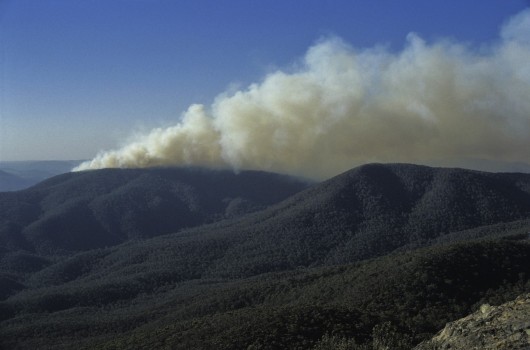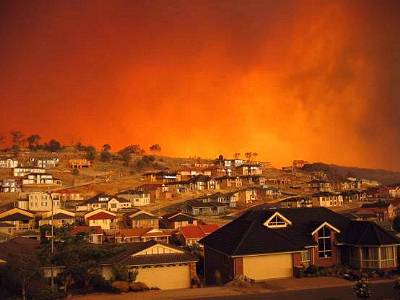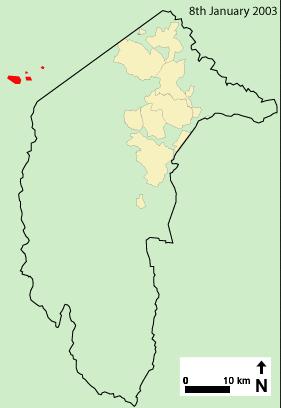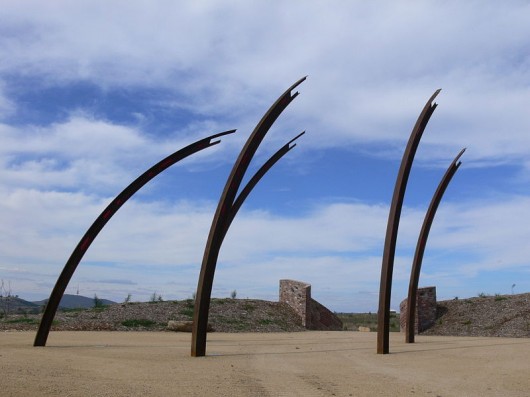RFS negligence immune from prosecution, why?
Monday, December 17th, 2012 McIntyres Hut Bushfire in Brindabella National Park, New South Wales, 8th January 2003
It was manageable then, but negligently left to burn for days by the Rural Fire Service
McIntyres Hut Bushfire in Brindabella National Park, New South Wales, 8th January 2003
It was manageable then, but negligently left to burn for days by the Rural Fire Service
.
On 8th January 2003, reported lightning strikes had ignited remote fires in the Brindabella National Park inside New South Wales and in Namadgi National Park in the Australian Capital Territory (ACT).
Ten days later, the McIntyres Hut Bushfire along with the Bendora Bushfire, the Stockyard Spur Bushfire and the Mount Gingera Bushfire, coalesced and burnt out of control into the south-western suburbs of Canberra.
It tragically became The 2003 Canberra Firestorm.
- Four people perished
- 435 people were injured, many suffering horrific burns
- 487 homes and 23 commercial and government premises were destroyed
- 215 homes, commercial premises, government premises and outbuildings were damaged
- Mount Stromlo observatory (an institution of international renown) was destroyed
- An inestimatable number of animals (livestock and wildlife) were killed
- Almost 70% of the ACT, some 157,170 hectares were burnt
.
 Canberra Firestorm looms
[Source: SOSNews.org, ^http://www.sosnews.org/newsfront/?p=236]
Canberra Firestorm looms
[Source: SOSNews.org, ^http://www.sosnews.org/newsfront/?p=236]
.
The ACT Coroner Maria Doogan conducted an inquiry into the cause, origin and circumstances of the bushfires and inquests into the four deaths associated with those fires. On December 2006, her findings: ‘The Canberra Firestorm‘ concluded that “failure to aggressively attack the fires in the first few days after they ignited” was a key factor that led to the firestorm.
Coroner Doogan was also scathing of the ACT’s Emergency Services Bureau (ESB) for:
- Failing to attack the fires that had been burning for 10 days before they reached the capital.
- Failing to warn residents of the danger early enough, saying this exacerbated the property losses and caused panic and confusion on the day of the firestorm.
.
But responsibility for fire suppression inside the Brindabella National Park also lay with the NSW National Parks and Wildlife Service.
Today ACT Supreme Court Chief Justice Terence Higgins has found that the New South Wales Government (Rural Fire Service) was negligent in the way it tackled the January 2003 blaze.
One of the plaintiffs suing the NSW Government, Brindabella landowner Wayne West said today “We have won the case on negligence, the judge has made a decision the fire should have been fought and could have been fought in a different manner, and we win the case at common law.’’
Mr West, along with plaintiffs represented by insurance giant QBE Insurance, have been suing the NSW Government for gross negligence.
But the NSW Rural Fires Act 1997 confers immunity from liability if the Rural Fire Service acted “in good faith”. This means that even though the Rural Fire Service is guilty of gross negligence, it and its members are immune from prosecution for negligence, becase they can hide behind the NSW Rural Fires Act.
So Chief Justice Higgins has ruled in favour of the NSW Government.
“The result I have reached is that the plaintiffs’ claim must, as a matter of law, be denied,” Chief Justice Terence Higgins said today in an 86-page judgment.
“However, but for the express limitations on the liability which otherwise would attach at common law, those plaintiffs who suffered loss or damage would have been entitled to compensation for their losses. Effectively, they are deprived by statute of what would, under the general law, be regarded as just compensation.”
“The legislature has, however, spoken so as to exempt NSW from such liability, and the courts must apply the law as parliament has decreed it.”
The judge agreed with the plaintiffs that the NSW Rural Fire Service embraced an “inadequate and defective strategy. “The question is, however, whether the adoption of that strategy, albeit negligent, was ‘so unreasonable that no authority could properly consider the act of omission to be a reasonable exercise of its functions’.”
The judge identified failures in strategic planning, but made no criticism of the front-line firefighters “at any level”.
Mr West said while the ultimate decision was “devastating” the case was never about the money.
“That fire was allowed to burn, there could have been action taken to prevent the fire escaping or being enticed to escape. The fires shouldn’t have burnt the houses and [caused] the injuries and the four lives in Canberra, that’s what we were here for from day one.’’
When asked what lessons should be taken from the firefighting response Mr West replied:
.
“Get in the fire immediately and look at the fire – don’t look at it 50 kilometres away.”
 Bushfire Progress – click on image
(The top red patch is the McInture Bushfire inside NSW)
Bushfire Progress – click on image
(The top red patch is the McInture Bushfire inside NSW)
.
Alan Conolly, representing the QBE clients, said they would read the judgment and consider their options.
“There’s always, in a case as big as this, there’ll be issues we have to look at, and at the moment we first have to read the judgment and advise our clients,” he said.
West has immediately flagged a decision to challenge this decision and to take that fight to the ACT Court of Appeal.
“We have only fallen over in the courtroom today on an Act the [NSW] government put in place…the state doesn’t have a duty of care to an individual, and that’s where we fell over today”, West said.
.
[Source: ‘West to appeal after losing 10-year court battle’, 20121217, by Louis Andrews (journalist), Canberra Times, ^http://www.canberratimes.com.au/act-news/west-to-appeal-after-losing-10year-court-battle-20121217-2biea.html].
 ACT Bushfire Memorial (Duffy)
ACT Bushfire Memorial (Duffy)
.
Editor’s Comment:
.
The general community has right to expect that government, as the public authority, must be at all times properly diligent in performing its duty it owes to its dependent community. This is perhaps no more so than its implied fiduciary duty to protect the community from harm. Outside the military, the emergency services duty of government – be it police, ambulance, fire, disaster response – stands at the forefront of this fiduciary duty because this is where the risk and consequence of harm to the community is greatest. This is the basis of community trust in government and the rule of law, otherwise as a society we resort to ‘every man for himself’ chaos.
Under Division 1, Section 63 of the Rural Fire Act 1997, there is a prescribed duty of the public authority (the Rural Fire Service) to prevent bush fires, and this necessarily includes taking:
“any other practicable steps to prevent the occurrence of bush fires on, and to minimise the danger of the spread of a bush fire on or from any land vested in or under its control or management.“
Allowing the known McIntyre Fire to burn for multiple days without diligent suppression response has been found by the ACT Coroner and the ACT Supreme Court to have been negligent. Since this fire was situated on Crown Land in New South Wales, the New South Wales Rural Fire Service owed a fidicuary duty of care to the community to ensure resource capability, to diligently suppress and properly extinguish the fire, which it fundamentally failed to do.
The Rural Fire Service owed a higher duty of care to the community to properly extinguish the fire, than with other concerns such as cost mitigation by avoiding the cost of aerial suppression. It is a breach of that duty of care when a public authority under-resources and under-performs emergency management response. It is shameful that governments continue to hide behind legislation and volunteers when the risk and consequences of bushfire and wind changes are known. The community has a right to entrust government capability and to trust legislation to serve the bests interests of the community, not the convenience of government bureaucracy.
The McIntyre Fire started off some distance from human settlement and would have been operationally treated as a defacto hazard reduction. It is past time that the high duty of fire fighting to protect life and property extends to protecting the valuable ecological integrity of the community’s national parks. The interface between life, property and national parks has become intertwined and all it takes is a change of wind for bushfire risk to morph from being ‘contained’ to being ‘catastrophic’.
.
Further Reading:
.
[1] ACT Coroner Report into the Canberra Firestorm 2003, published December 2006, >Read Report, (PDF, 400kb) ^http://www.courts.act.gov.au/resources/attachments/The_Canberra_Firestorm_%28VOL_I%29.pdf
.
[2] ACT Supreme Court Decision: ‘WAYNE WEST & ANOR v THE STATE OF NEW SOUTH WALES [2012] ACTSC 184 (17 December 2012), >Read Decision, (PDF, 2.5MB), ^http://www.courts.act.gov.au/supreme/
.
[3] Related article on this website: 2006 Grose Valley Fires – any lessons learnt?







